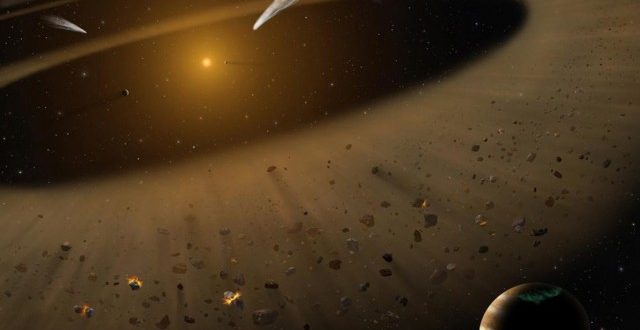NASA has discovered a planetary system that looks a lot like our own, just 10.5 light-years away.
The star is a promising one that may have alien life on some of the planets that surround it. Termed epsilon Eridani, the star looks to be similar in size and shape to our sun. However, it is a very young star. This view of this system may lend vital clues about our own solar system.
“This star hosts a planetary system currently undergoing the same cataclysmic processes that happened to the solar system in its youth, at the time in which the moon gained most of its craters, Earth acquired the water in its oceans, and the conditions favorable for life on our planet were set,” astronomer Massimo Marengo, one of the scientists studying Epsilon Eridani, wrote in a summary of the project.
Scientists have been studying the distant star since 2004, but it’s only now that the full extent of the planetary system has come to light – thanks to NASA’s Stratospheric Observatory for Infrared Astronomy (SOFIA), which is essentially a 2.5-metre telescope strapped to a 747 plane. As well as the star and its planets, the airborne observatory was able to investigate a debris disk in the system formed from space rock collisions.
Crucially, they were able to observe a gap in the debris disk, suggesting there is a planet that serves a similar role to Neptune in our own solar system. “It really is impressive how [Epsilon Eridani], a much younger version of our solar system, is put together like ours,” said Kate Su, lead author of the study and associate astronomer at the University of Arizona.
“The prize at the end of this road is to understand the true structure of epsilon Eridani’s out-of-this-world disk, and its interactions with the cohort of planets likely inhabiting its system,” Marengo wrote in a post about the project.
“SOFIA, by its unique ability of capturing infrared light in the dry stratospheric sky, is the closest we have to a time machine, revealing a glimpse of Earth’s ancient past by observing the present of a nearby young sun.”
Agencies/Canadajournal
 Canada Journal – News of the World Articles and videos to bring you the biggest Canadian news stories from across the country every day
Canada Journal – News of the World Articles and videos to bring you the biggest Canadian news stories from across the country every day



